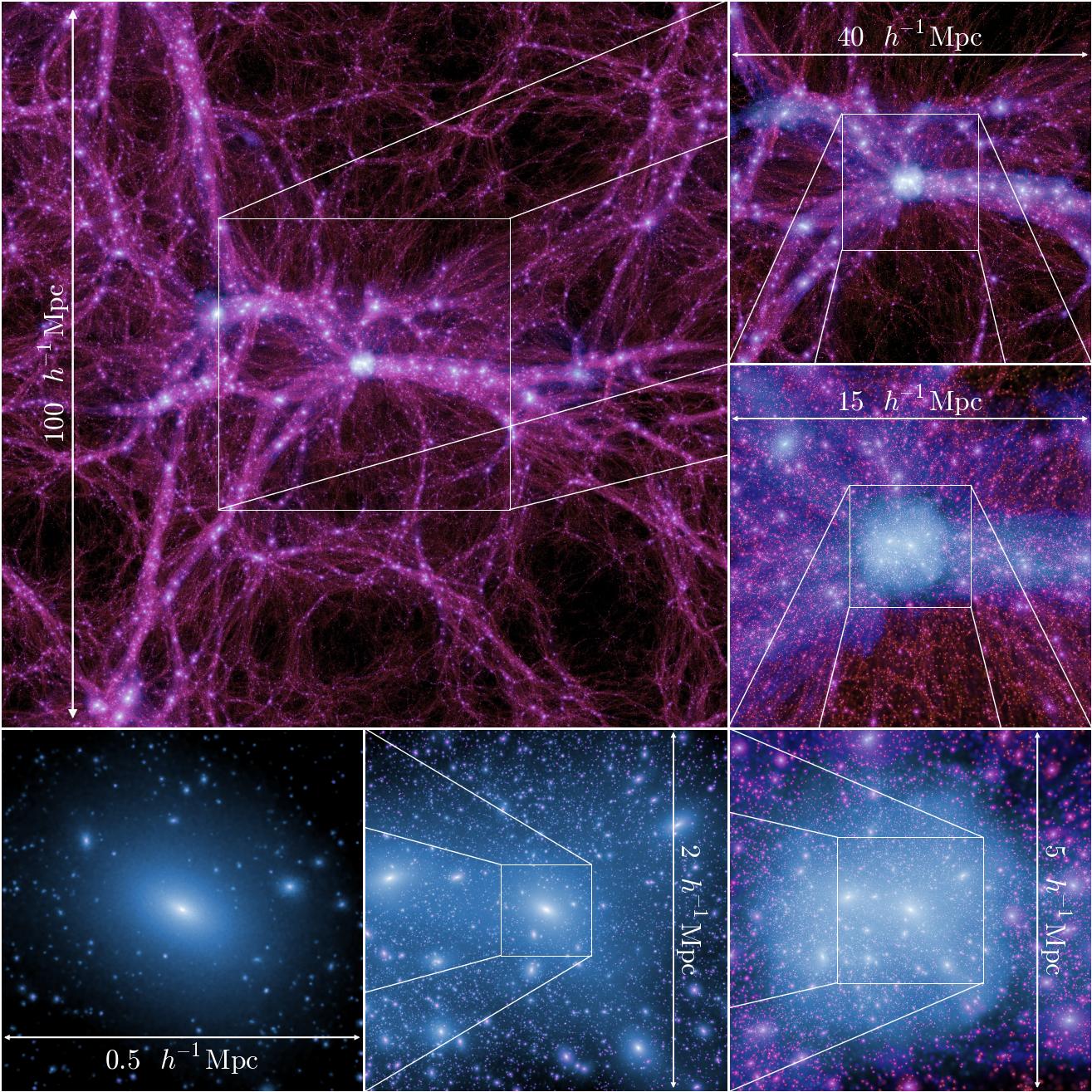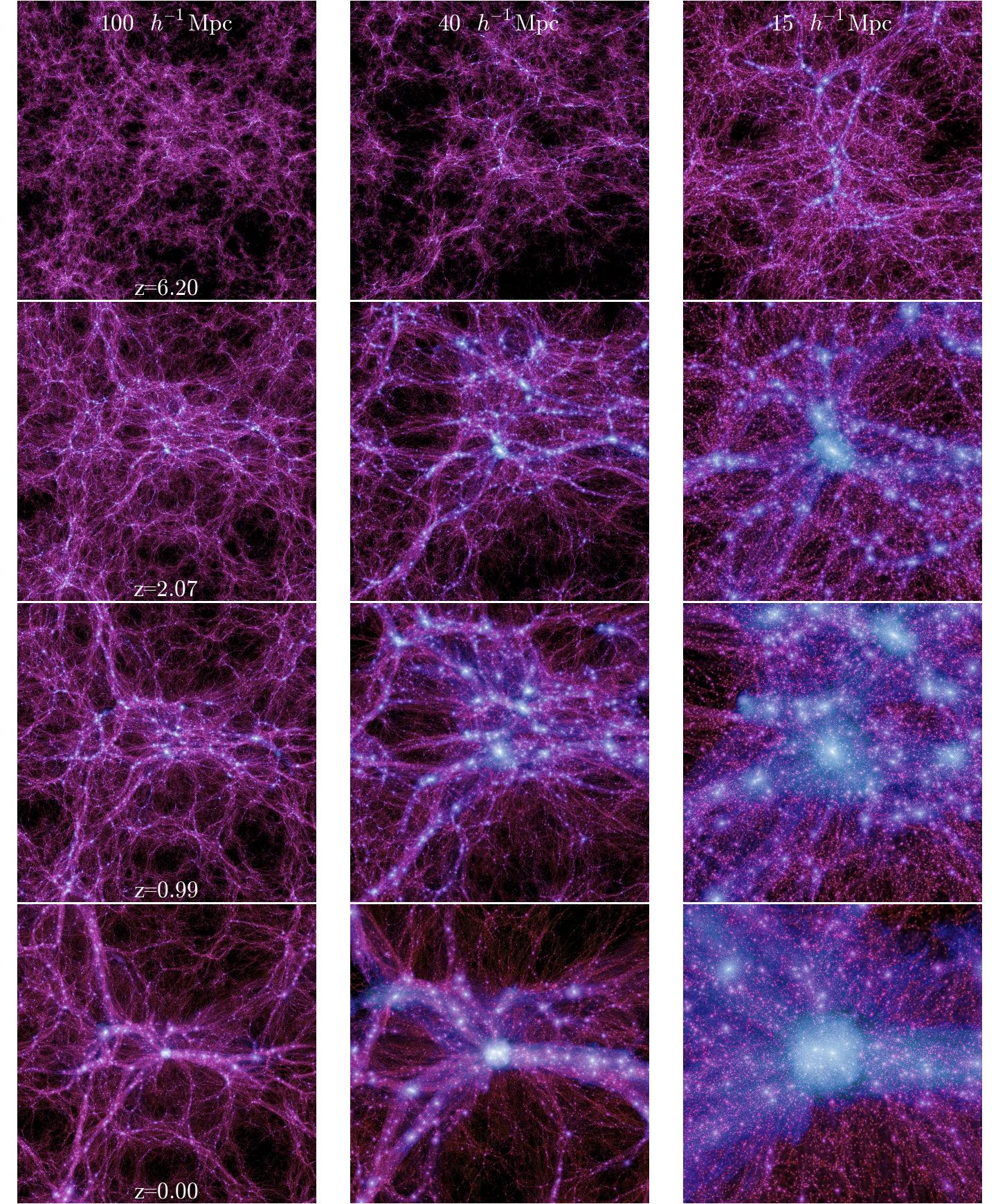Resolving Cosmic Structure Formation with the Millennium-II Simulation
(1) MPA, (2) Durham, (3) ARI-ZAH, (4) MPEMon. Not. Roy. Astron. Soc., 398, 1150 (2009); arXiv:0903.3041 [astro-ph]
Abstract and paper (NASA ADS)
The Millennium-II Simulation is a very large N-body simulation of dark matter evolution in the concordance ΛCDM cosmology. It uses the same cosmological parameters and number of particles as the Millennium Simulation in a cube one-fifth the size (100 Mpc/h), resulting in 5 times better spatial resolution (1 kpc/h) and 125 times better mass resolution (6.89 x 106 Msun/h). The combination of the Millennium and Millennium-II Simulations provides precise results over an unprecedented range of scales. Furthermore, the six Milky Way-mass halos resimulated in the Aquarius Project were selected from a lower resolution version of the Millennium-II Simulation. The Aquarius halos, and several thousands of other halos with similar masses, are therefore present in the Millennium-II Simulation.
Dark matter halo catalogs, merger trees, and galaxy catalogs (based on the semi-analytic model described in Guo et al. 2011) from the Millennium-II Simulation are publicly available (registration required).
Visualization
MoviesMovie credits: Boylan-Kolchin et al. (2009)
Composite images (click to enlarge)
Image credits: Boylan-Kolchin et al. (2009)
Individual images (click any image to enlarge):
Image credits: Boylan-Kolchin et al. (2009)
Redshift zero
This set of 6 images starts at the full scale of the simlation (100 Mpc/h) and zooms into the largest halo at redshift zero, ending up at a scale of 0.5 Mpc/h. (These are the images that compose the zoom sequence above.)
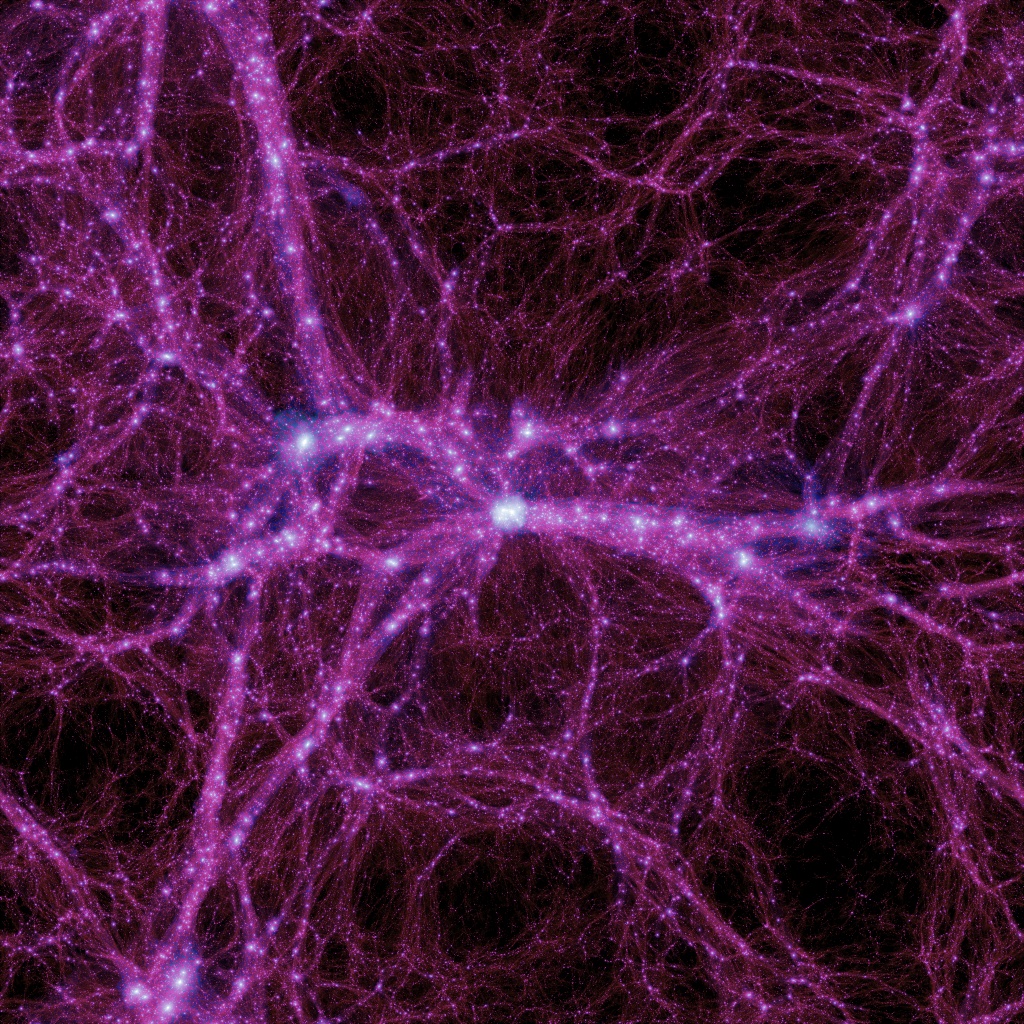
|
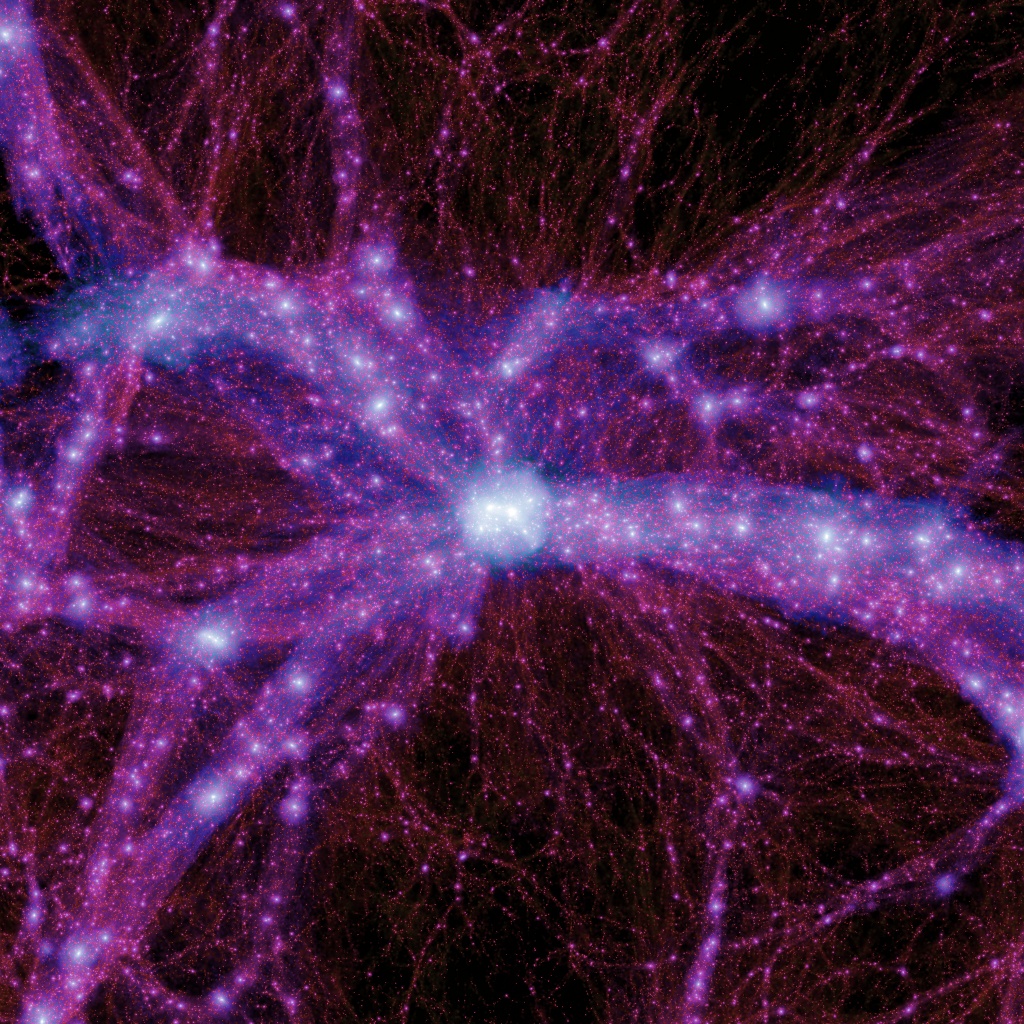
|
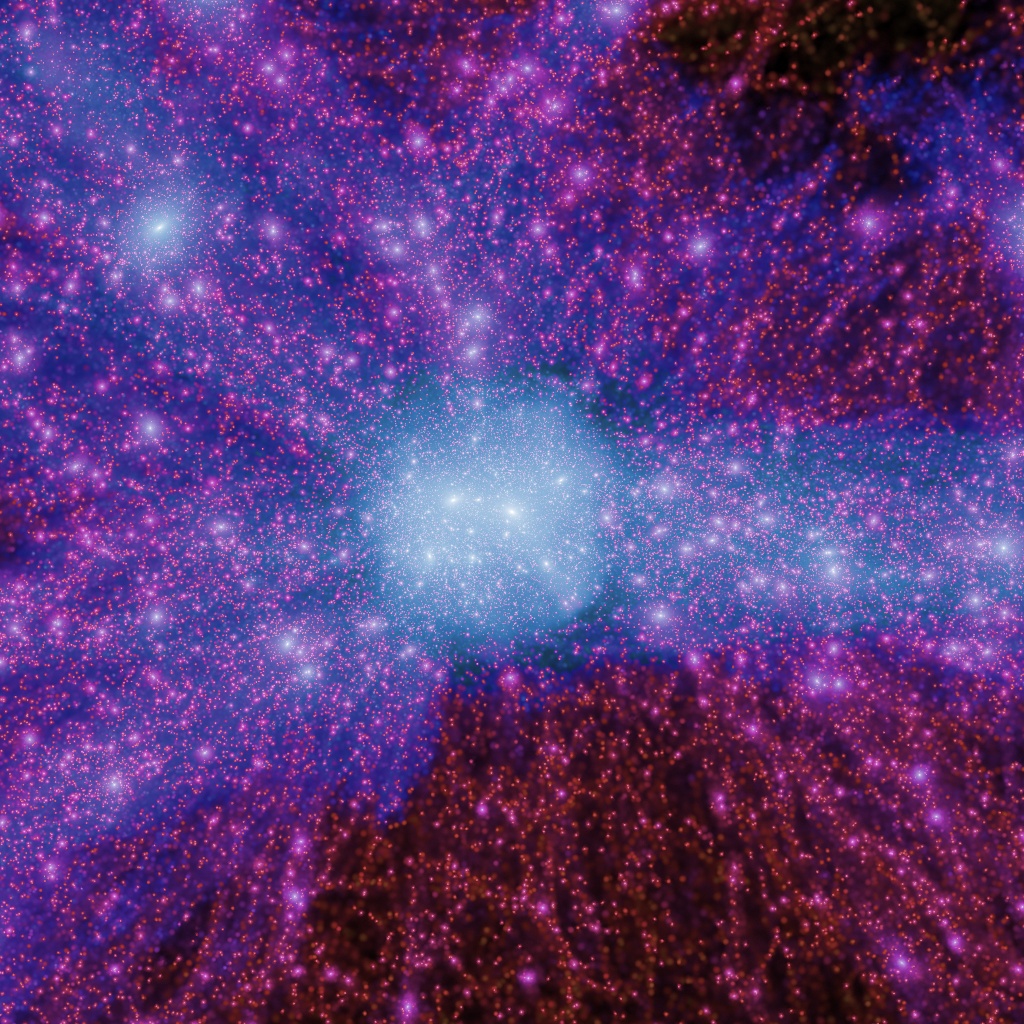
|
| 100 Mpc/h | 40 Mpc/h | 15 Mpc/h |
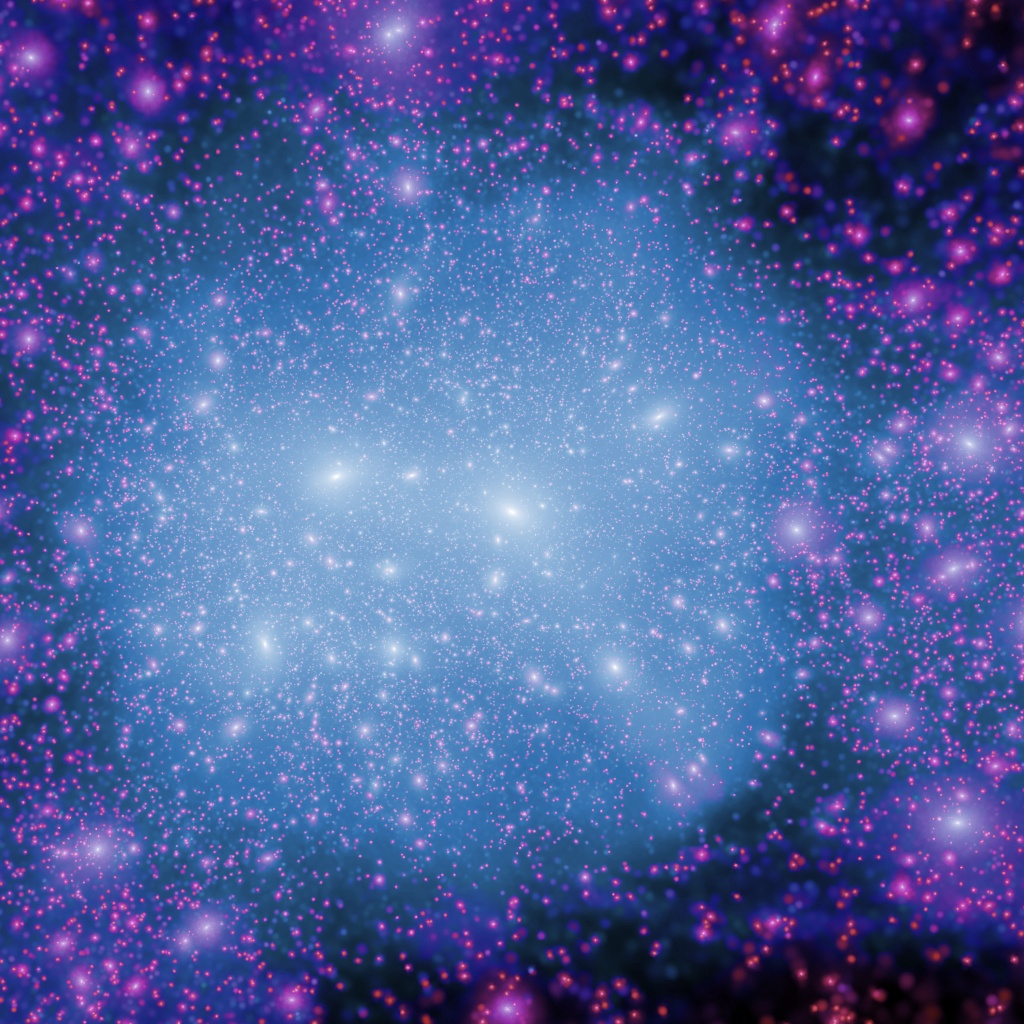
|
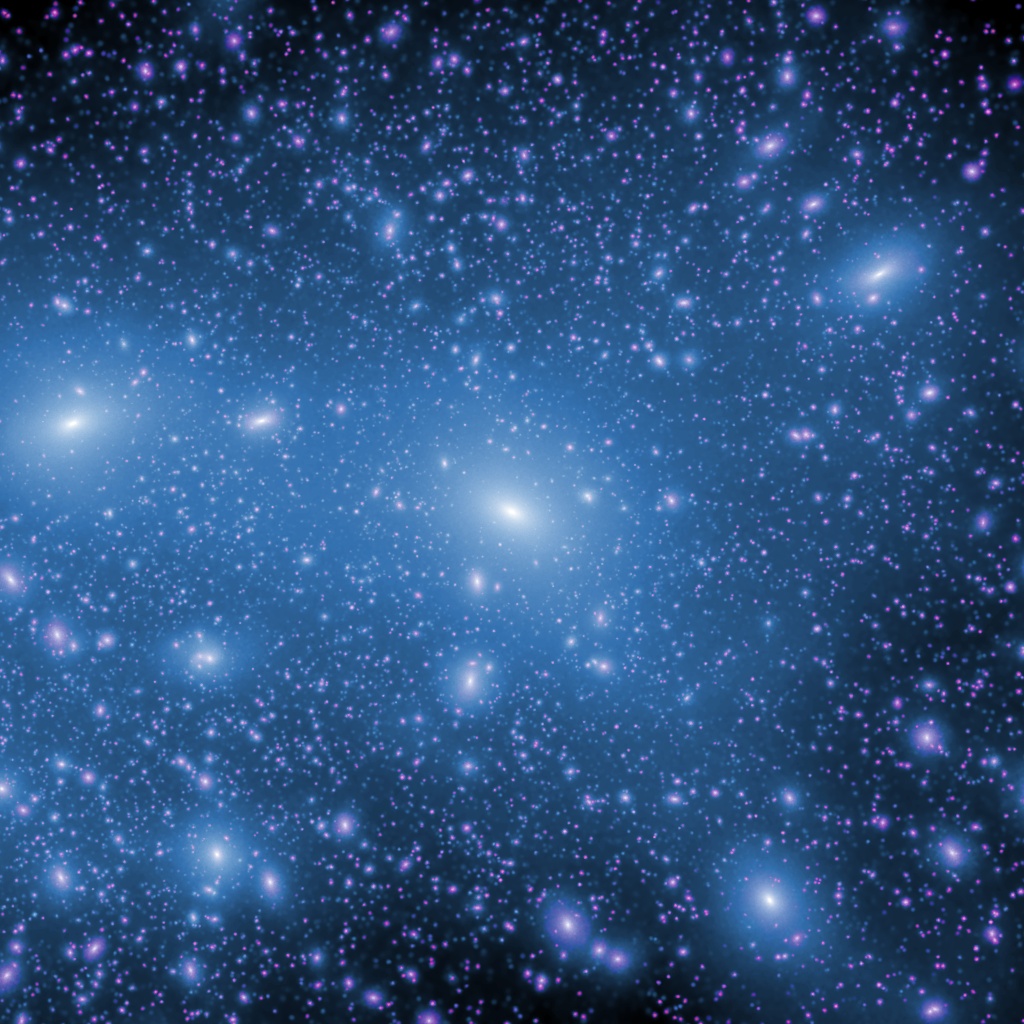
|
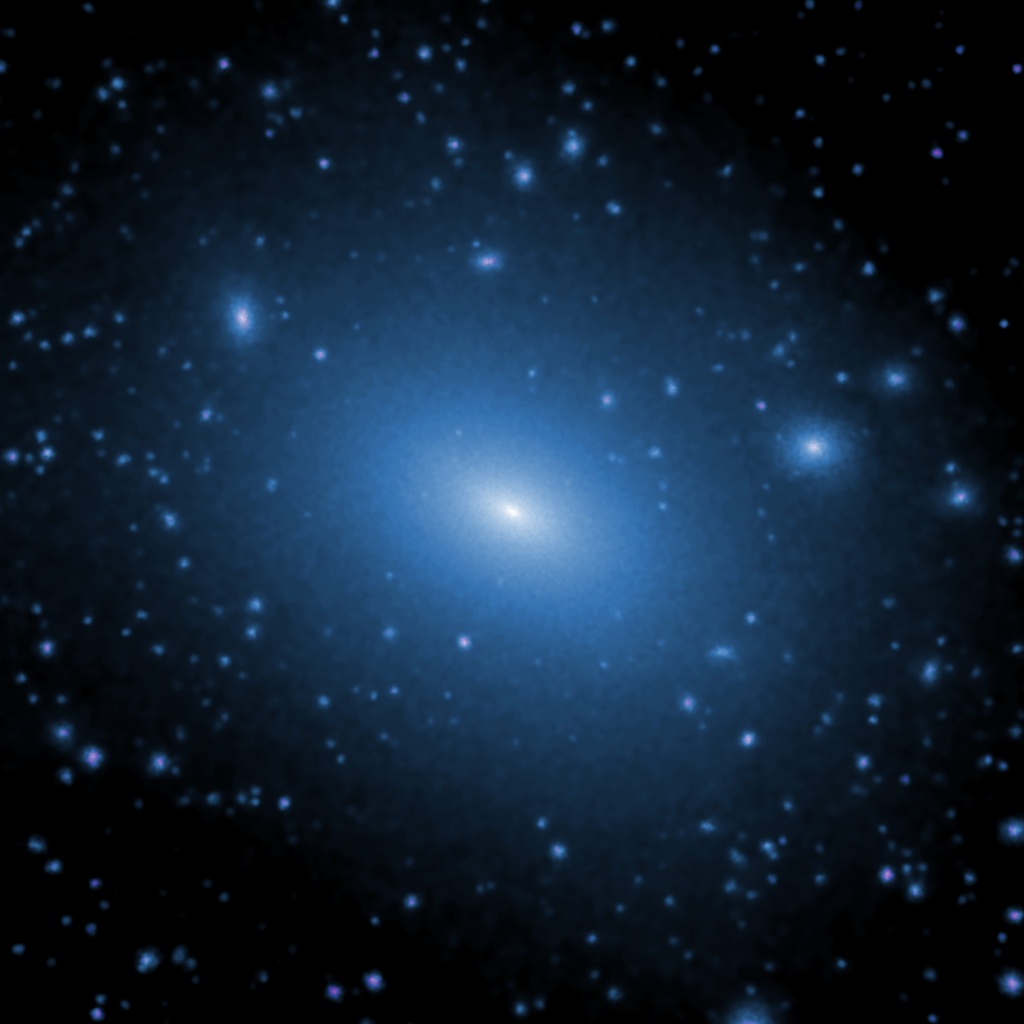
|
| 5 Mpc/h | 2 Mpc/h | 0.5 Mpc/h |
Time Evolution
This set of 12 images shows the growth of the most massive halo over cosmic time. The left column is 100 x 100 Mpc/h, the center column is 40 x 40 Mpc/h, and the right is 15 x 15 Mpc/h (in comoving units). From top to bottom, the regions are plotted at redshift 6, 2, 1, and 0. (This is the set of images that composes the time evolution sequence shown near the top of this page on the right.)
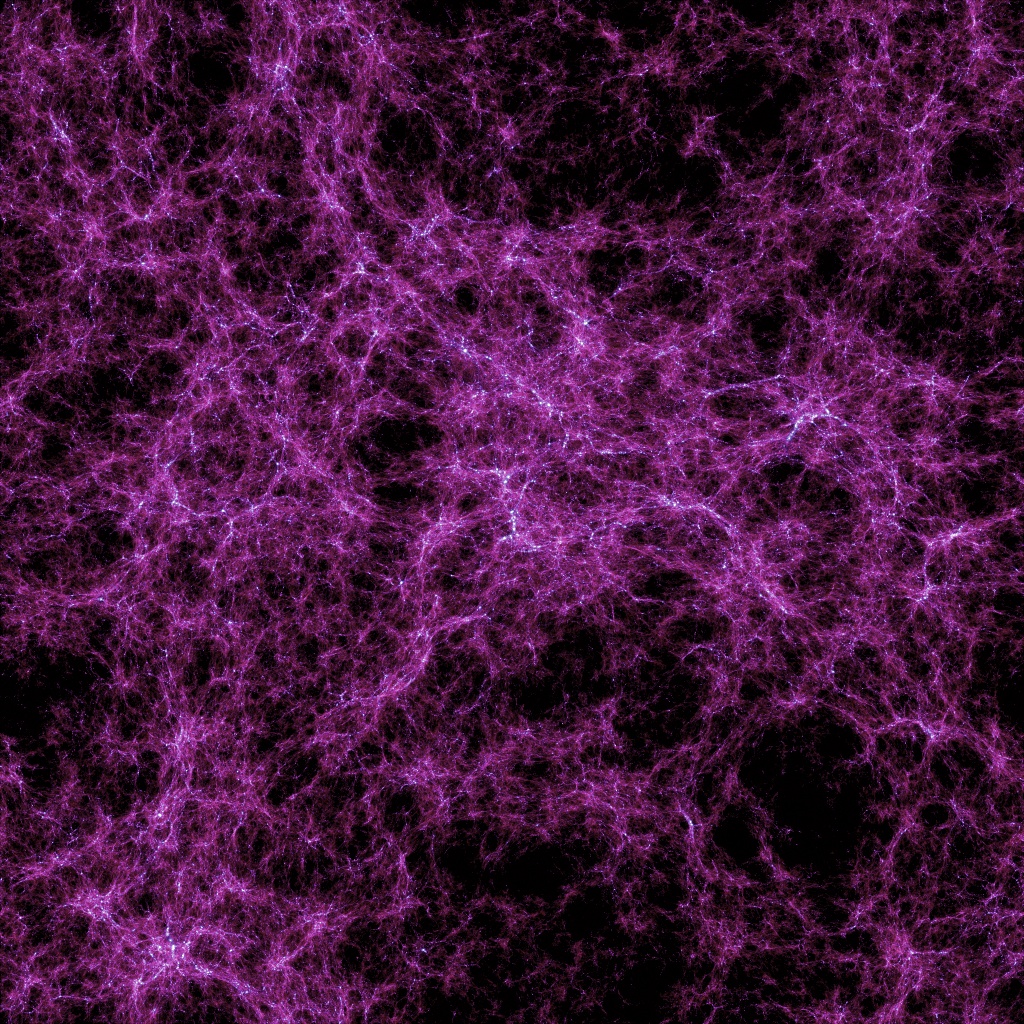
|
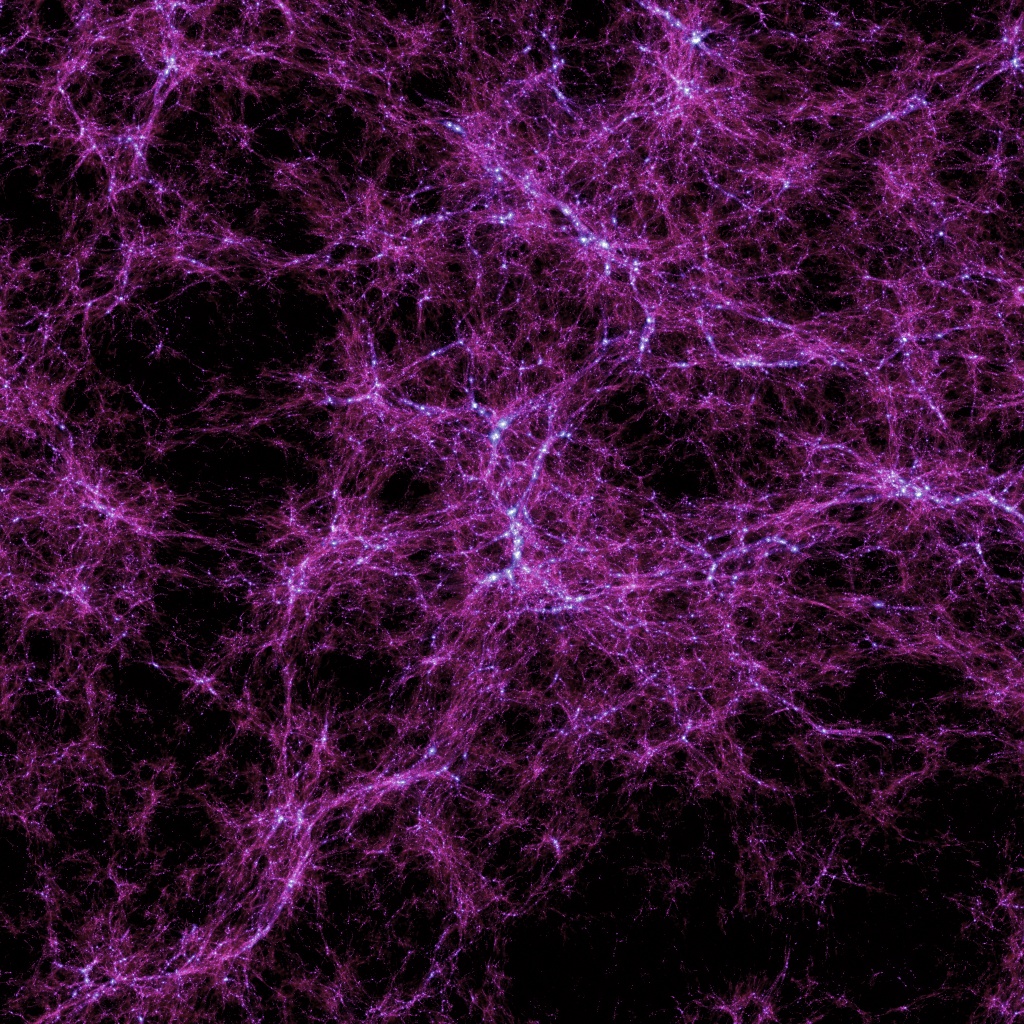
|
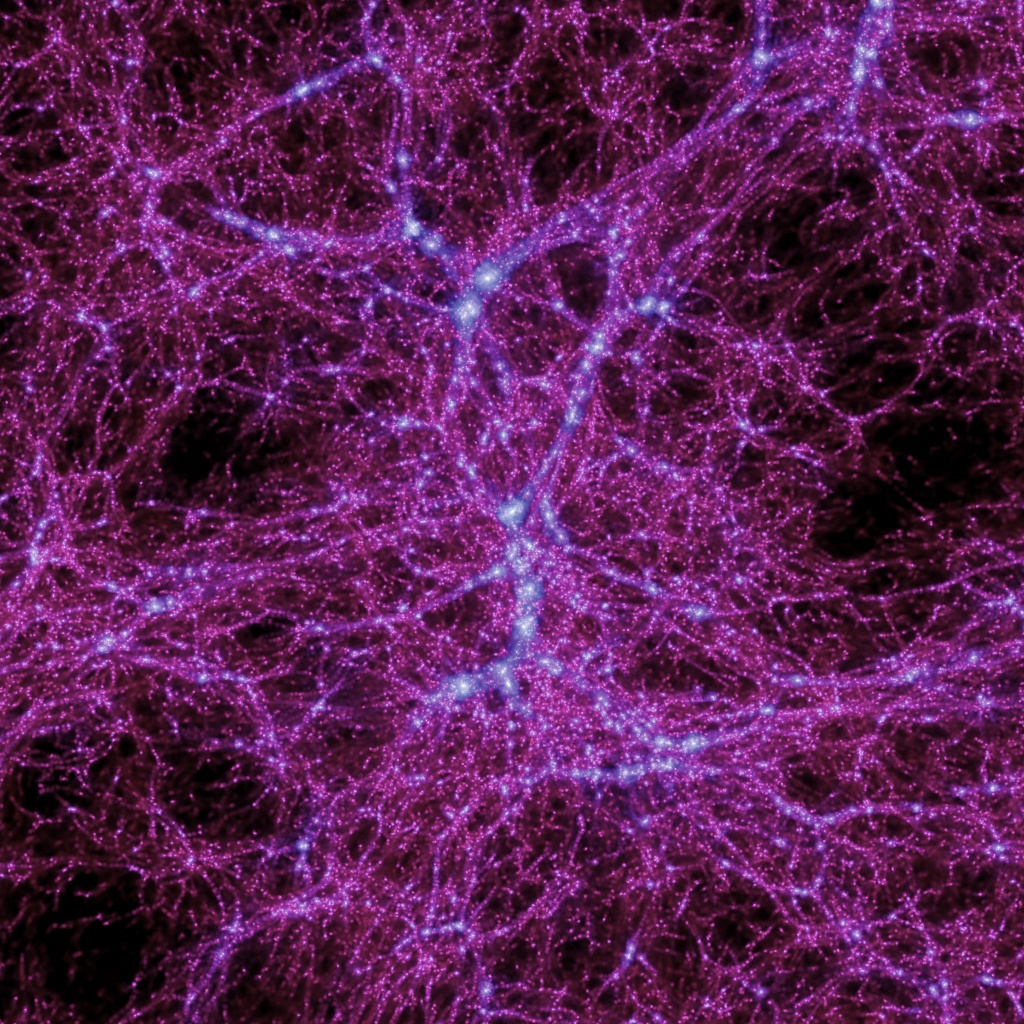
|
z=6.2 |
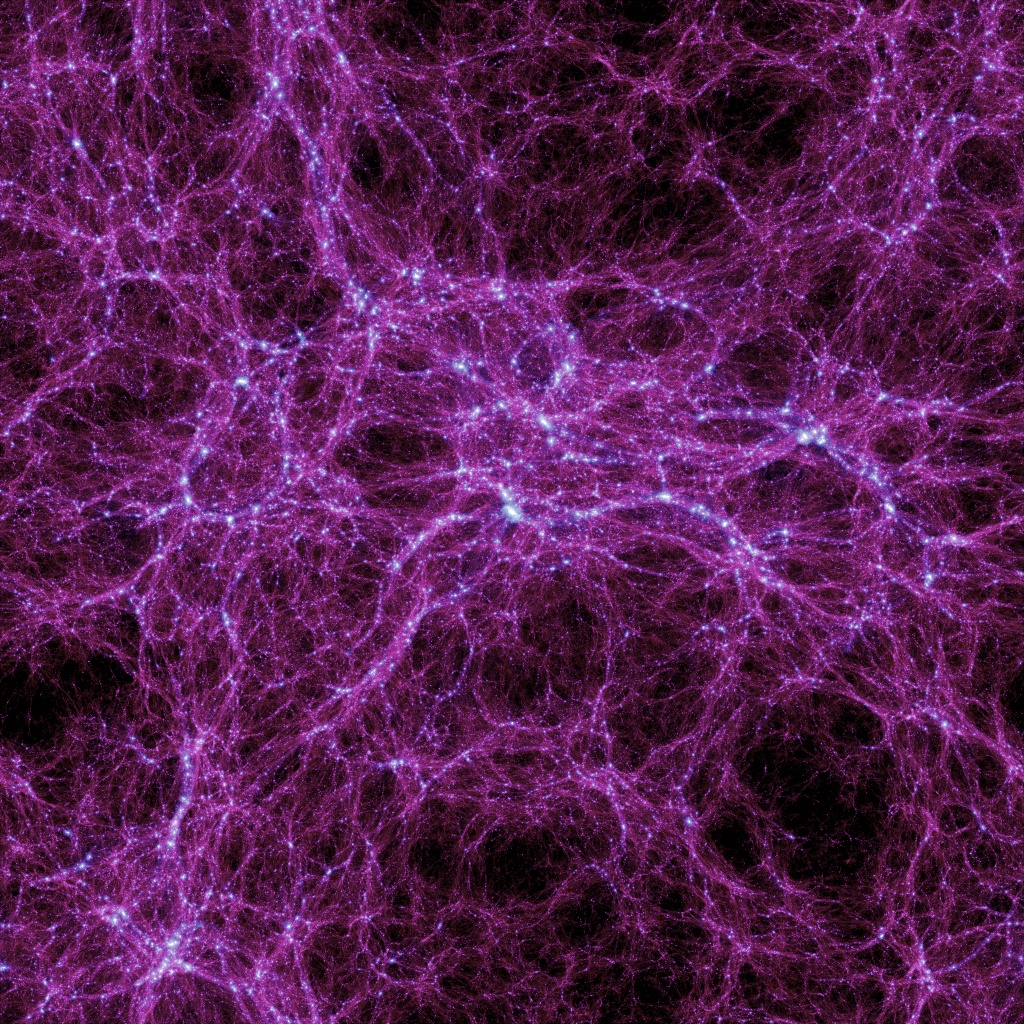
|
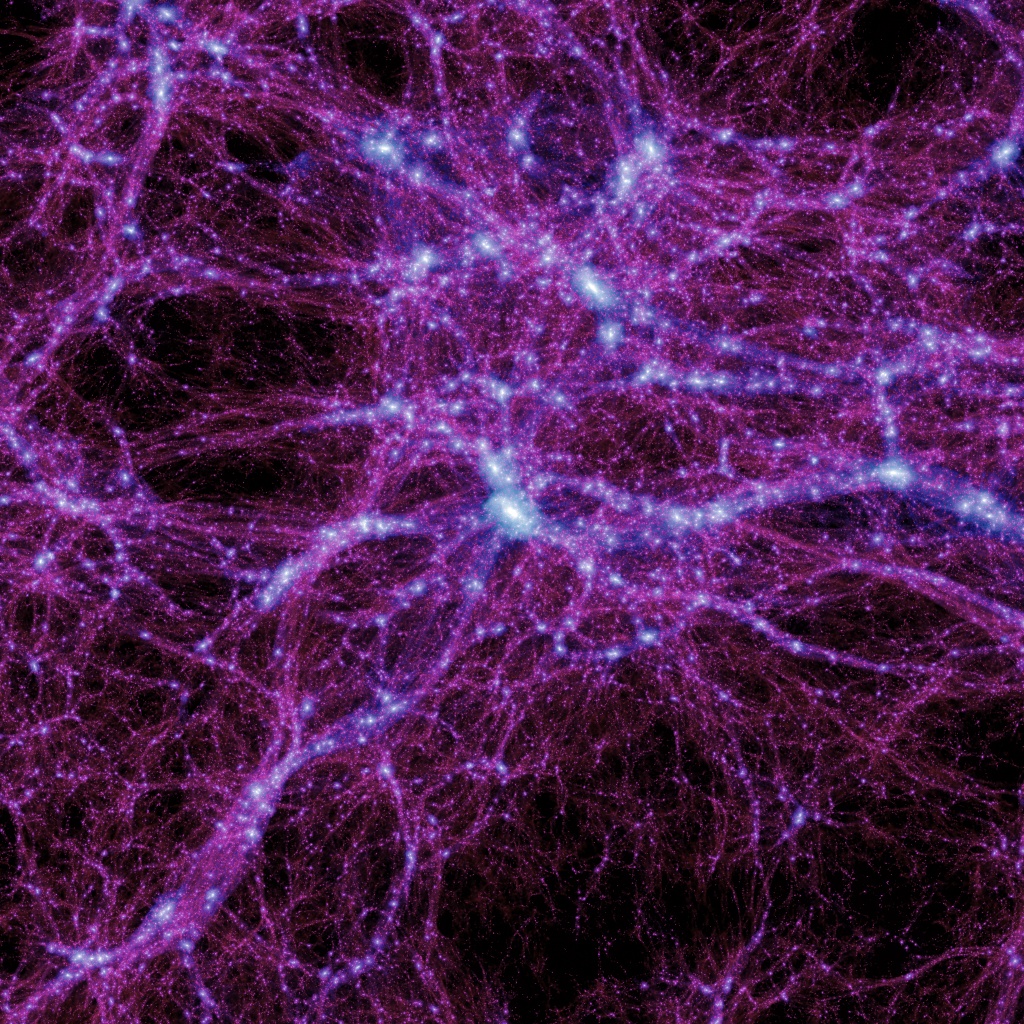
|
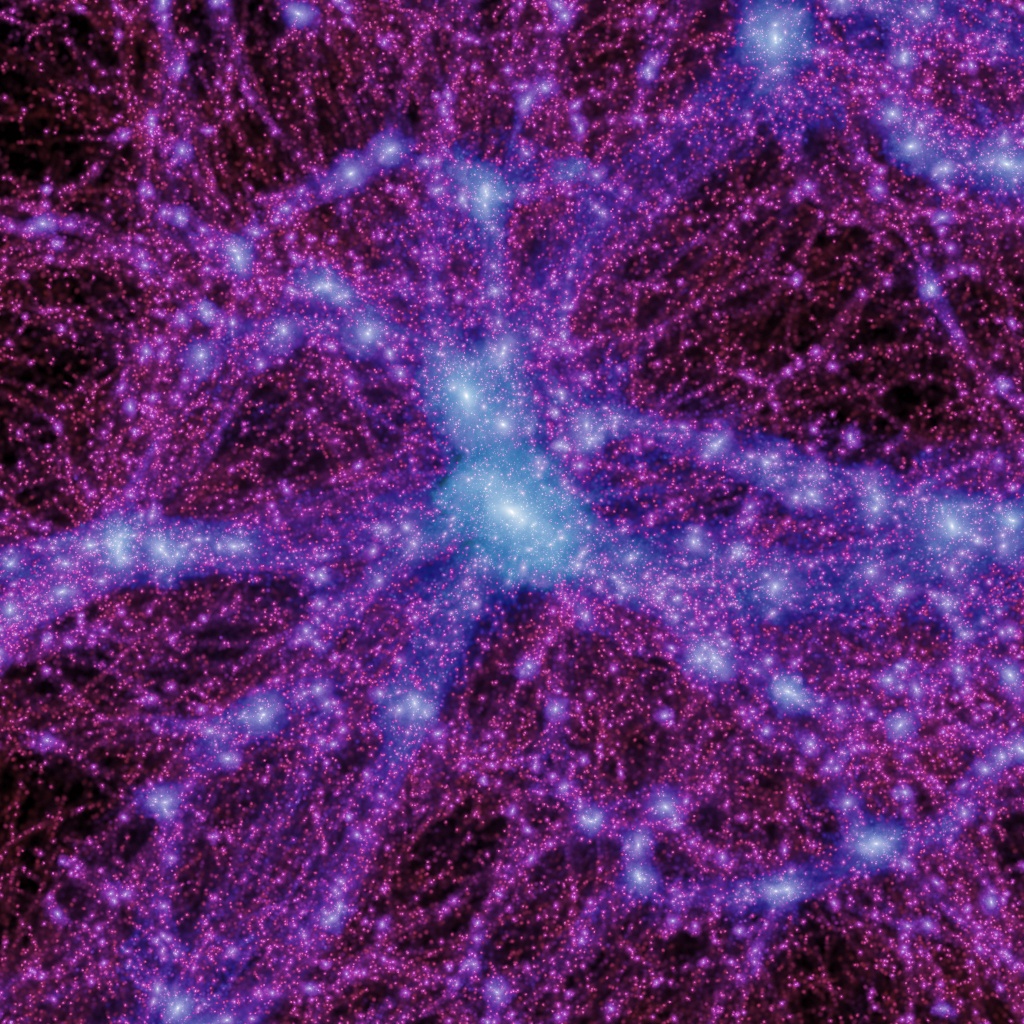
|
z=2.07 |
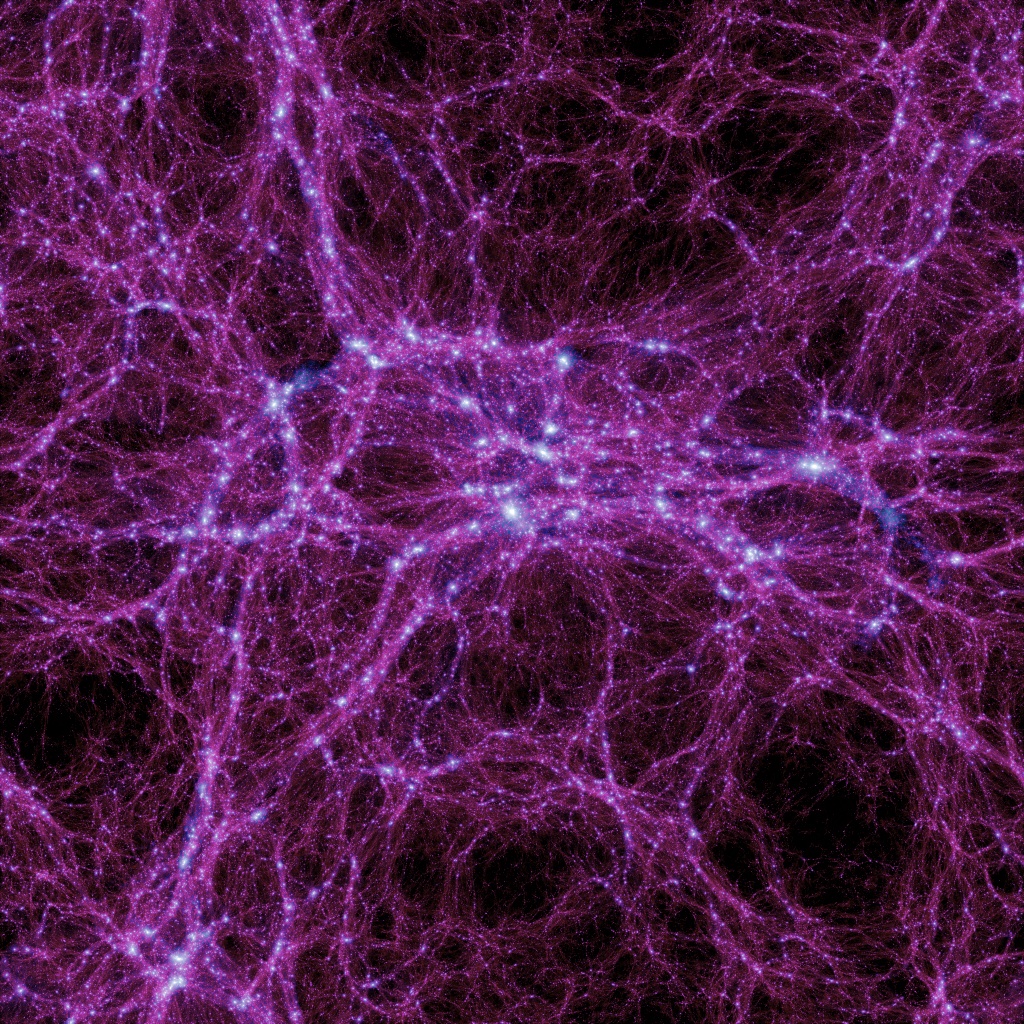
|
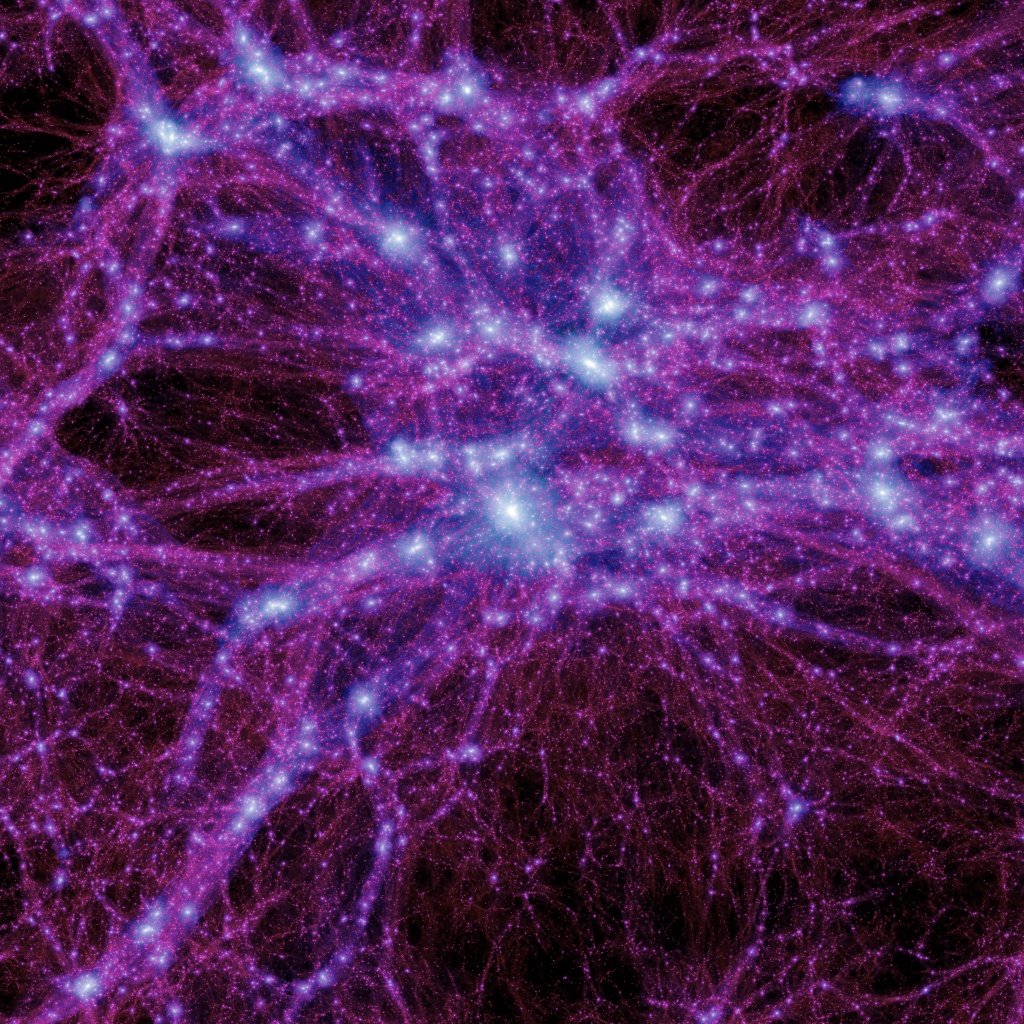
|
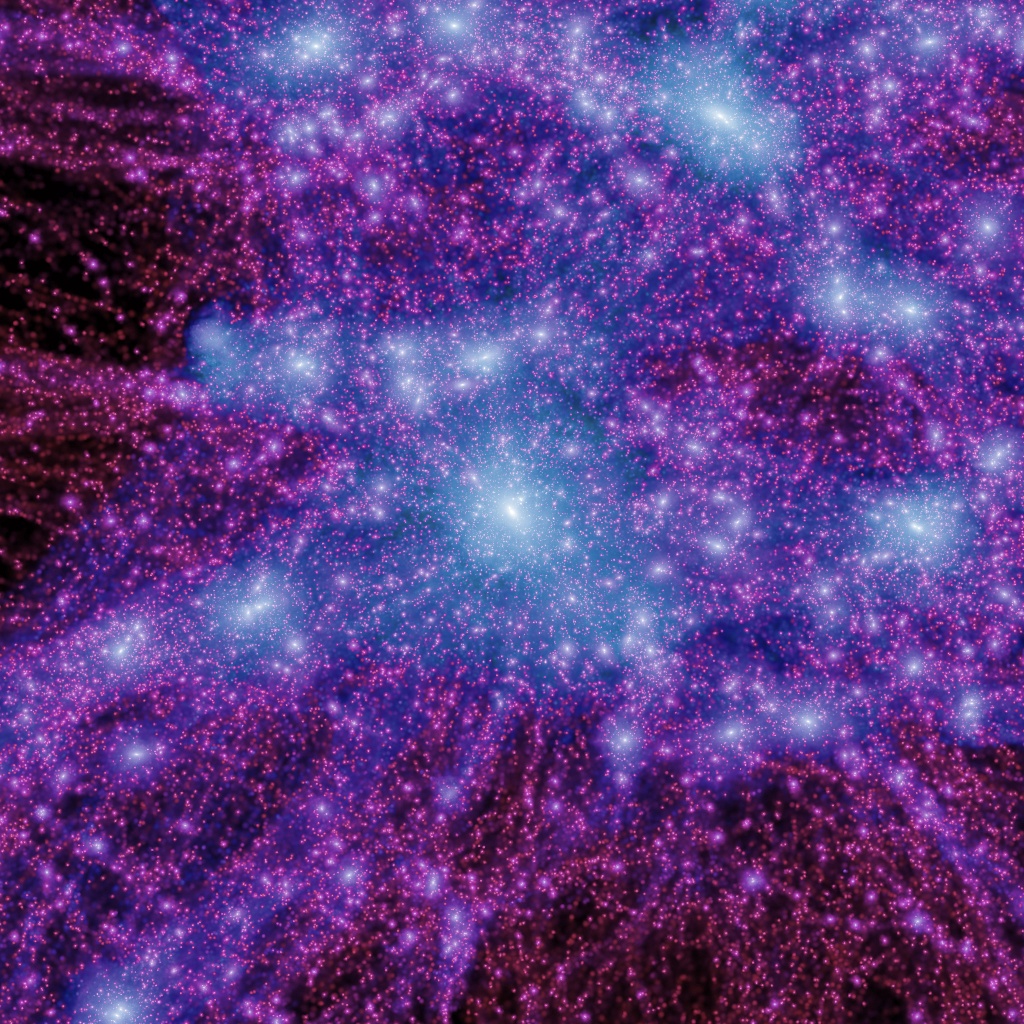
|
z=0.99 |

|

|

|
z=0 |
| 100 Mpc/h | 40 Mpc/h | 15 Mpc/h |
